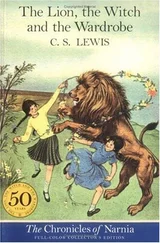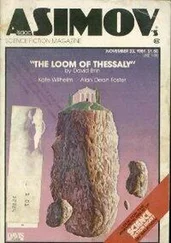J. Lennon - The Funnies
Здесь есть возможность читать онлайн «J. Lennon - The Funnies» весь текст электронной книги совершенно бесплатно (целиком полную версию без сокращений). В некоторых случаях можно слушать аудио, скачать через торрент в формате fb2 и присутствует краткое содержание. Год выпуска: 1999, ISBN: 1999, Издательство: Dzanc Books, Жанр: Современная проза, на английском языке. Описание произведения, (предисловие) а так же отзывы посетителей доступны на портале библиотеки ЛибКат.
- Название:The Funnies
- Автор:
- Издательство:Dzanc Books
- Жанр:
- Год:1999
- ISBN:9781936873647
- Рейтинг книги:3 / 5. Голосов: 1
-
Избранное:Добавить в избранное
- Отзывы:
-
Ваша оценка:
- 60
- 1
- 2
- 3
- 4
- 5
The Funnies: краткое содержание, описание и аннотация
Предлагаем к чтению аннотацию, описание, краткое содержание или предисловие (зависит от того, что написал сам автор книги «The Funnies»). Если вы не нашли необходимую информацию о книге — напишите в комментариях, мы постараемся отыскать её.
The Funnies — читать онлайн бесплатно полную книгу (весь текст) целиком
Ниже представлен текст книги, разбитый по страницам. Система сохранения места последней прочитанной страницы, позволяет с удобством читать онлайн бесплатно книгу «The Funnies», без необходимости каждый раз заново искать на чём Вы остановились. Поставьте закладку, и сможете в любой момент перейти на страницу, на которой закончили чтение.
Интервал:
Закладка:
The first thing I saw entering was an enormous woman, stout and dense like a cannonball, wearing a studded leather bikini and scabbard. The latter contained an ornate medieval sword. The former contained, barely, the woman. She was standing at a chipped folding buffet table where two men sat wearing Star Trek Federation uniforms and Spock ears. The three looked up at me at once, goggling as if I was the one in the weird getup.
“Uh, is this the conference?” I asked.
“Oh, yes,” said one of the men. “Are you a visitor or a participant, or what are you?”
“Mostly a visitor. I’m supposed to be on a panel.”
The other man, who was smaller, began rifling through a clipboardful of papers. “What’s your name?” this one said.
“Tim Mix.”
A lot of shuffling and frowning. The big lady sidled off, resting a palm on the hilt of her sword. I looked down the hall in the direction she’d gone and saw a diverse and clumsy menagerie of people, bizzarely costumed: a space suit, some kind of animal with a lot of tentacles, a wizard and a witch ducking hand in hand into a brightly lit doorway. “I don’t see you here,” said the small Spock. “M — I–X, right?”
“Yes,” I said, still watching the crowd. Then something occurred to me. “This is the cartoonists’ conference, isn’t it?”
“Oh, no!” said the tall Spock, and they both laughed. “This is JerCon! We’re a science fiction conference! Your con is down the hall.”
“Ah,” I said. “Thanks.”
Sure enough, there was another table at the other end of the hallway. From a distance it appeared to be staffed by contemporary earthlings in conventional clothes. I made my way past the sci-fi people, peeking into ballrooms and meeting rooms. Racks of paperbacks and comic books, loud laughs from panel discussions, where characters in and out of costume spoke from behind microphones set up on table stands. I had no trouble getting registered for the cartoonists’ conference, was given a schedule and a hello-my-name-is pin with TIM MIX laser-printed onto it. Next to my name, seemingly questioning the legitimacy of my attendance, was a winking Dogberry, the wily and irreverent canine hero of “Art’s Kids.” I looked at my schedule. Art Kearns himself was the grand master of the conference, and would deliver a closing speech at tomorrow night’s awards dinner. He would be on hand afterward to give drawings and autographs to his fans.
I scanned the list of participants, and came across some of the most famous names in cartooning: Leslie Parr, Kelsey Hoon, dozens of others I knew from my daily perusal of the funnies.
Which, I suddenly realized, I hadn’t read all summer. Pierce didn’t subscribe to a newspaper, and apparently neither had my dad. Oddly enough, I hadn’t even missed them. I made a mental note to pick up a paper and read it sometime over the weekend, if for no other reason than to see what strips of my father’s the syndicate was running, now that he was dead.
Meanwhile, the convention people had apparently gotten the news of his death too late to remove him from the list of participants. There he was, drawing and signing in the Red Room, speaking at a panel in the Blue Room, debating Tyro, author of the minimalist strip “The Emerald Forest,” in the Brown Room. I wondered who they had gotten to replace him: hopefully not me. I looked at the schedule for Sunday and found:
9am-11 am: Continental Breakfast Buffet in Ballroom B
11am: Kelsey Hoon draws and signs in Red Room
Panel Debate: Taking Over the Old Strips, Green Room
Tyro draws and signs in Blue Room
12 noon: Leslie Parr draws and signs in Blue Room
I guessed I was to be in the Green Room at eleven the next day, and decided to attend a panel debate, to see what was expected of me. I was beginning to get excited — not just about the conference, but about cartooning and being a cartoonist. I was feeling, for the first time, a part of something.
I looked at my watch — my father’s watch. Ten o’clock. According to the schedule, no panel discussions were going on. All right, fine. Somebody named Sybil Schimmelpfennig was drawing and signing in the Blue Room, and since an open door nearby bore a felt-tip-markered sign reading “Blue,” I went in.
The room was not exactly empty, but it was far from its capacity of about a hundred and fifty people. There were maybe thirty gathered around a table at the front, most of them gnawing on donuts and sipping coffee from paper cups, chatting animatedly to one another. A woman sat at the table, her head of dark shiny hair bent over, twitching with the motion of her drawing arm.
It might have been a sixth sense, or perhaps just dumb logic, that made me realize this must be the Sybil, author of the strip “Sybil.” “Sybil” didn’t run in the Philly Inquirer , so I didn’t get to read it often, but it had spawned a fairly massive T-shirt and coffee mug industry and was therefore familiar. Its basic premise was this: Sybil was a thirtyish woman who worked in an office, and she complained about things. The main things she complained about were men, clothes and food. Recurrent characters were the coworker who always had good luck with men, the department store clerk who sold Sybil clothes, and the deli clerk who made the sandwiches Sybil ate and which made Sybil fat, or so she thought. Sybil always wore black: a black blouse with a white star on the chest, and either black pants or a black skirt. The oddness of the star — what kind of office worker wore such clothes, let alone all the time? — was lost in its ubiquity. Sybil posters were almost inevitable in any office. In them, Sybil was generally seated behind a desk, the papers in her “in” box towering unsteadily over the pile in her “out,” and she wore an expression of resigned exasperation. Or, in an alternate poster, usually hung in office break rooms, Sybil sat behind an enormous slice of pie, grinning coyly and saying something like “I shouldn’t…”
I walked to the front of the Blue Room, which was not blue, stepping over a crushed glazed donut that had been ground into the carpet by someone’s heel. I listened in for a moment to the conversation coming in stifled bursts through mouthsful of food. People were talking about other conferences they’d been to. Sybil herself finished up the drawing she was working on and handed it to a thickset woman with puffy yellow hair, who thanked her politely. Sybil nodded and grinned. “Any time,” she said. She was dressed exactly the same as her cartoon self, down to the white star. It wasn’t the usual pointy American-flag star, but a bulgy one, like a child’s toy.
“Hi there,” she said. “How do you want it?”
She was talking to me. I came to the table and rested my hand on the edge. Sybil Schimmelpfennig’s face, the thin, translucent kind of face you’d expect would flinch whenever it was looked at, was as twitchless and composed as a hunk of marble, and frozen into a grin so fiercely welcoming that I thought she must be mad. She had an unusually large chin. I said, “Uh, want what?”
“Your drawing. What do you want Sybil to be saying? Something about your girlfriend or boss, maybe? What do you do for a living?”
I considered my answer, as Sybil clearly grew impatient. “I’m a cartoonist, actually.”
“No kidding?” she said. “What strip?”
“I’m taking over the Family Funnies.”
Her expression at last changed, taking on a manipulative edge that unnerved me. She looked like she knew something about me I didn’t. “Ohhh. You’re Tim Mix.”
“Yeah.”
“Sorry to hear about your dad.”
“Yeah.”
“Right, so…” Expectant smirk.
“So what?”
Читать дальшеИнтервал:
Закладка:
Похожие книги на «The Funnies»
Представляем Вашему вниманию похожие книги на «The Funnies» списком для выбора. Мы отобрали схожую по названию и смыслу литературу в надежде предоставить читателям больше вариантов отыскать новые, интересные, ещё непрочитанные произведения.
Обсуждение, отзывы о книге «The Funnies» и просто собственные мнения читателей. Оставьте ваши комментарии, напишите, что Вы думаете о произведении, его смысле или главных героях. Укажите что конкретно понравилось, а что нет, и почему Вы так считаете.












